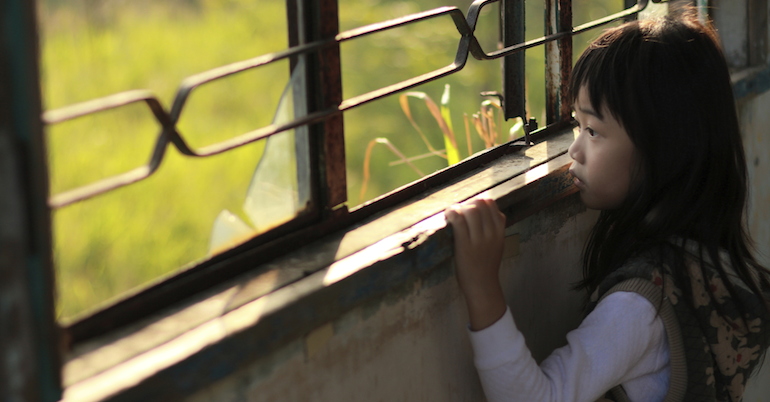It was a cold February morning when the social worker arrived to take three-year-old Kelly to her aunt and uncle’s house. She had lived with her foster family, the Hamiltons, for almost two years. They had planned on adopting her, but two weeks before the final custody hearing, the court ordered Kelly into the care of relatives she barely knew. With no pre-placement visits, Kelly was taken from the only parents she knew to live with strangers.
Traumatized by the abrupt separation and by placement into a family that took her under duress, Kelly didn’t do well. She changed from a bright-eyed, happy little toddler to a vacant, sad and angry child. After six months, her relatives backed out and called the agency to request her removal. The agency quickly contacted the Hamiltons to see if they were willing to take Kelly back — and to say that this time they could adopt her. But a very different little girl walked back through the Hamiltons’ front door.
When a Child Returns: What a Family Needs to Know
Kelly’s story is not an unusual one. Parents who have ridden this emotional roller coaster with their children need to be mindful of the following important points.
Difference
“One of the first things a family must know in these circumstances,” says Deborah Joy, a Cincinnati, Ohio, adoption therapist, “is that you are not getting back the same child. A foster family may send a happy, emotionally healthy child to her birth family, but the child who returns is now a traumatized child.”
Children who enter foster care, return to their birth families, and then back to foster care and adoption experience a minimum of five traumatic events, Joy explains. *Initial removal from the birth family; *removal from foster family back to birth family; *attaching or reattaching attempts with the birth family; *the crisis that precipitates return to foster care; *reunification with the foster family.
Sadness and Rage
Parents can expect the returning child to be sad, confused, and angry. The child’s rage is often expressed through aggressive acting-out behavior. Below the surface, but usually not verbalized, are questions like “Why didn’t you protect me?” “Why did you let me go?” What the child thought was safe and secure wasn’t. They are angry about that, and they may blame their foster parents.
A few years ago, the Espositos were a foster family caring for a sibling group of two girls and two boys. The children were ages three, four, six, and seven when they entered foster care. After two years, plans were made for the Espositos to adopt the children, with their birth mother’s blessing. On the morning that the birth mother was to sign the permanent surrender, she changed her mind. The sunset clause in the case plan went into effect, and the judge had to make a decision. He ordered the children back into their birth mother’s care — that same day. The children were taken to a motel, where she was temporarily living. During the subsequent weeks, the children experienced extreme neglect — as well as physical and sexual abuse — at the hands of their mom’s boyfriends. The confused and traumatized children were eventually placed back with the Espositos. The older ones kept asking them, “Why did you let this happen to us?” It has taken a very long time for the children to trust that they are safe and secure forever with the Espositos.
Confusion
When very young children experience this roller coaster family ride, all the adults in their world begin to blend together. Bill and Lorraine Search have been foster and adoptive parents for a number of years. Eddie and Melissa entered their lives at two-and-a-half and one-and-a-half years of age, and lived with them for more than two years. Reunification plans with their birth mother were successful, and the children returned to her. After three years with their birth mother, their lives deteriorated, so they came back to the Searches. Lorraine shares what ensued: “On our reunion meeting with Eddie, we took along an old toy of his that he had played with in our home. He didn’t remember us, but he remembered the toy. One afternoon, just a few weeks after he moved back into our family, he was playing with a younger child and an old car-racing track. He told me that when he lived with his birth mother, he had a track just like this one. ‘I was playing with it in the kitchen, and the cars kept running under my mom’s feet. She kept telling me to take it into the other room so she wouldn’t trip.’ Just as he finished his story, he stopped, looked straight at me, and said, ‘Wait a minute — you were the mom in the kitchen. Now I remember!'”
Regression
When Kelly left the Hamilton’s at age three, she was potty-trained, went to bed without fuss or pacifier, and fed herself. When she returned six months later, she could not be comforted without a pacifier, she threw food and utensils, and she needed a diaper full-time. Her behavior regressed to what it was when she had first come to their home.
Joy points out that part of the recapturing process is to realize that the child has taken steps backward in development. Often her behavior regresses to the age of the first trauma — the very first removal from the birth family. For Kelly, this is exactly what happened. She regressed to behavior that was appropriate for a one-year-old, her age when she first came to the Hamiltons’ home.
Dr. Vera Falhburg points out in A Child’s Journey Through Placement that “if regression to earlier levels of functioning is allowed following a move, the toddler or young child will usually regain lost skills in a few months. If undue pressure is put on the child to continue to function at what are considered to be age-appropriate levels, long-range problems are more likely.”
If you follow our tips (see Strategies that Work, below), you can guide your child in making sense of the past. Then you can all move forward to a positive and secure future.



